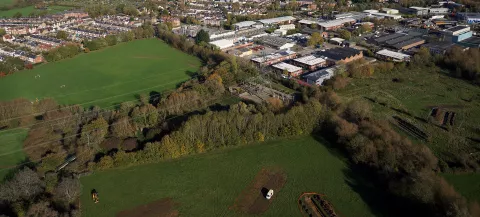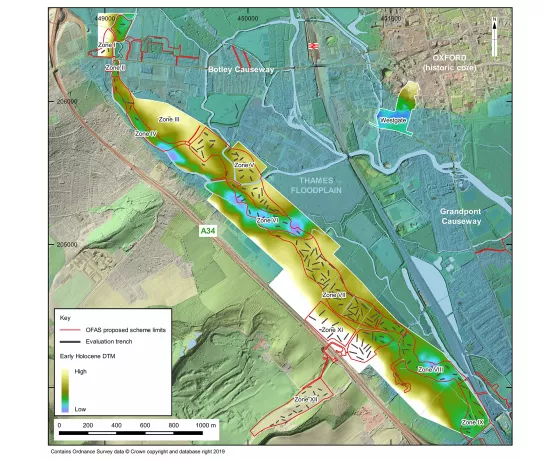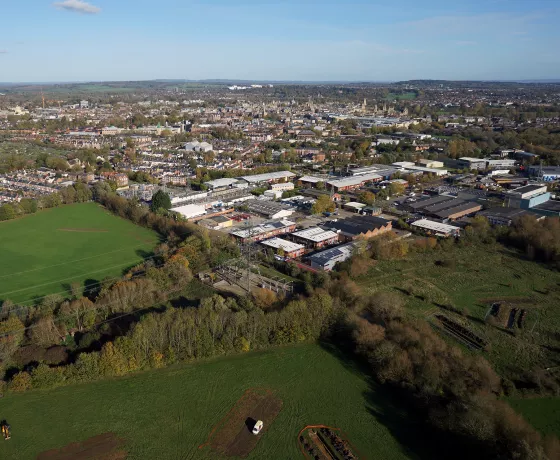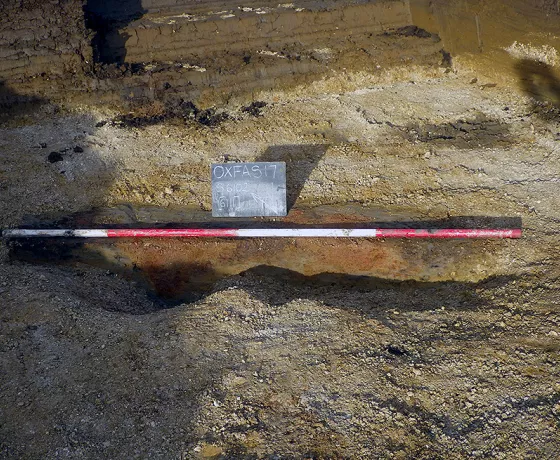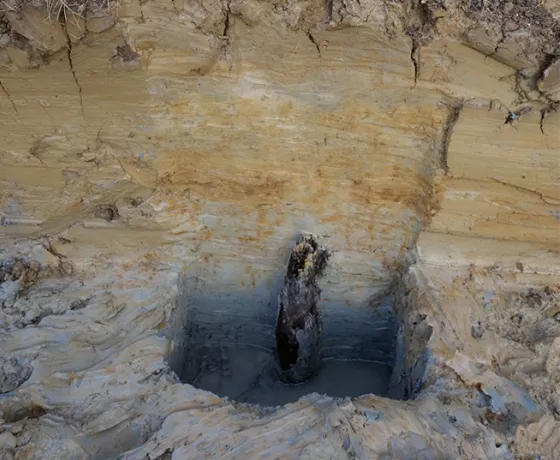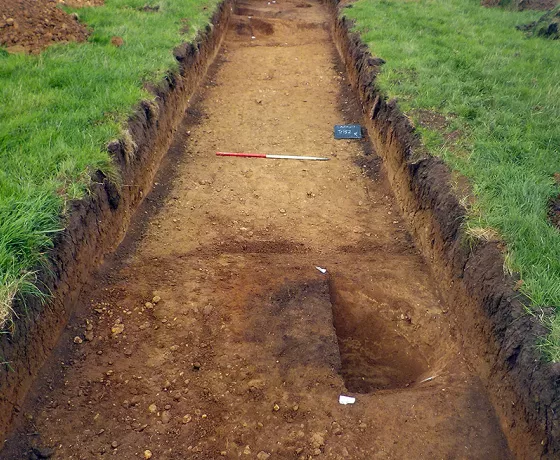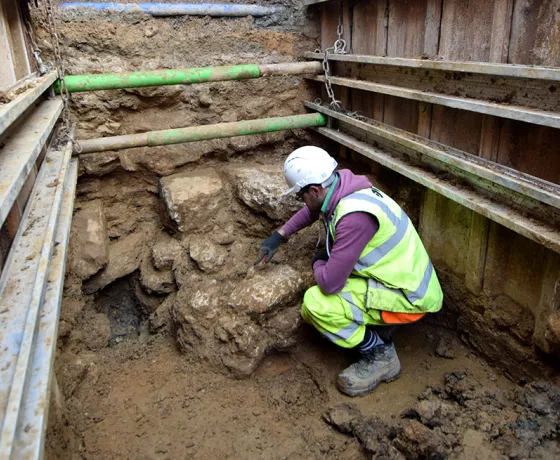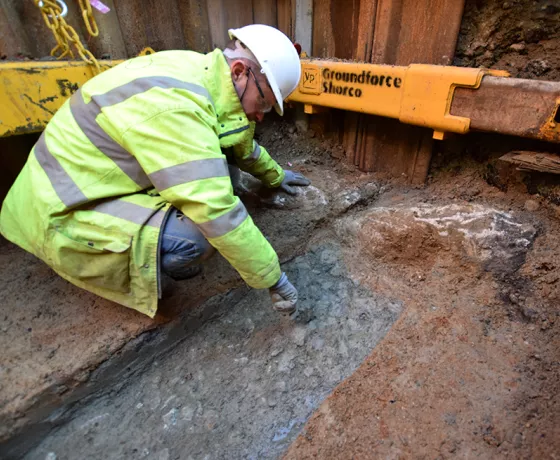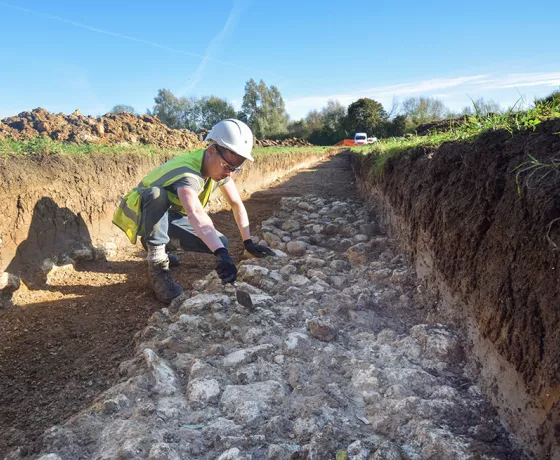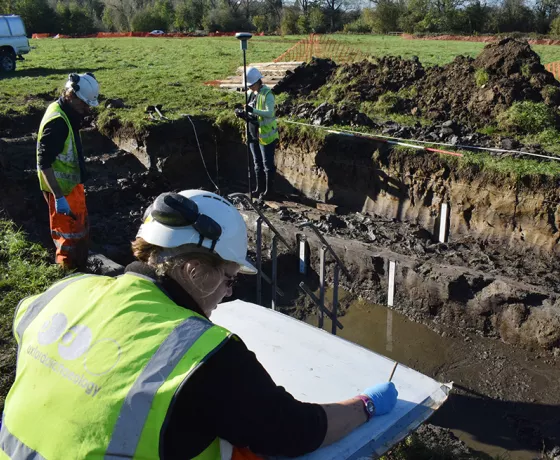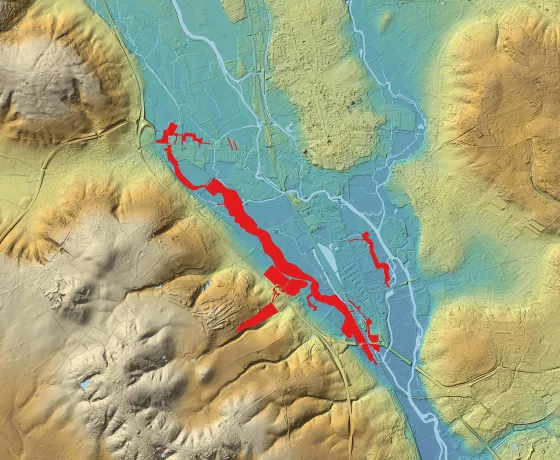Oxford Flood Alleviation Scheme
Floodplains are challenging settings to gain an understanding of changing past environments, landscapes, and land use. Evidence will survive in different locations and within a variety of buried environments but thousands of years of moving water channels, and different patterns of deposition and erosion mean that it has become buried below various thicknesses of alluviation (and colluvium at the valley edge). Fieldwork can be practically difficult, time-consuming, and expensive in these locations.
Oxford Archaeology took an efficient and iterative approach on the Oxford Flood Alleviation Scheme, which was both innovative and methodical and used a variety of complementary techniques to gain a good working understanding of the potential for archaeological and geoarchaeological remains along the 5km route. Our approach allowed data to be analysed and assessed at each stage of the investigations and then used to design the scope of work for the next stage.
Initial geoarchaeological and geophysical results were combined to generate a reliable, below-ground topographic deposit model of the first gravel terrace, showing areas of relict channels and higher ground along the route corridor. This model enabled an accurate and effective evaluation strategy to be designed. The work successfully revealed a pattern of land-use and floodplain change from the late Mesolithic/early Neolithic to the modern periods, and allowed the scheme area to be understood through different geoarchaeological zones that relate to the different topographic characteristics. The level of information provided by this model allows the client to understand the physical impact of the scheme on the archaeological and geoarchaeological resource, the risk from this resource to the project, and to devise a suitable and effective mitigation strategy.
The work was carried out between 2015 and 2020 for Ch2m/Ch2m Hill, Jacobs, J T Mackley & Co Ltd (a member of the van Oord Group), and VBA (Joint Venture between VolkerStevin Ltd, Boskalis Westminster and Atkins) on behalf of the Environment Agency. The scheme is scheduled for construction from 2024.

